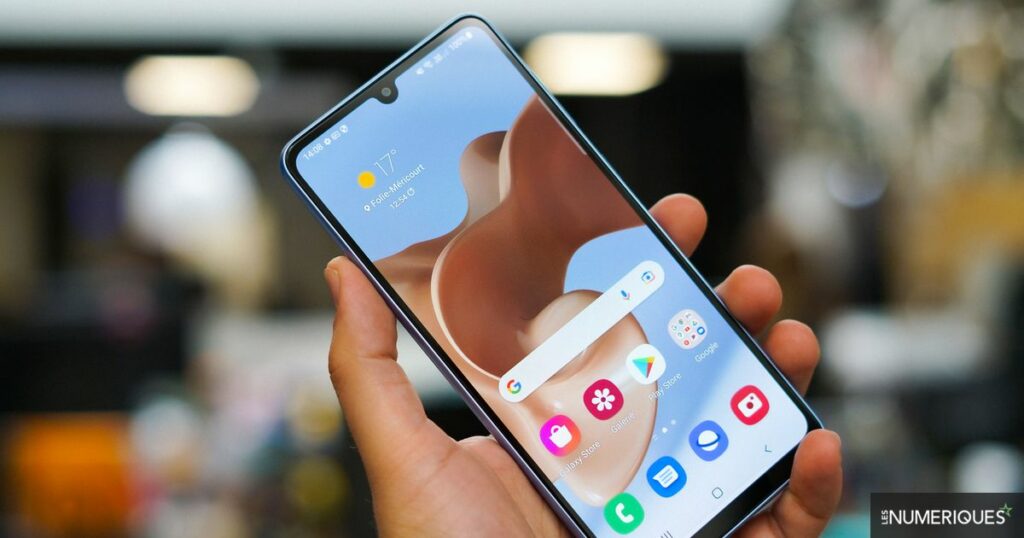On paper, this Galaxy A33 5G has a configuration similar to that of the 2021 model. We therefore find a quadruple photo sensor consisting of a 48-megapixel wide-angle lens, whose lens opens at f / 1.8 , an 8 Mpx ultra wide-angle (f / 2.2), a 5 Mpx (f / 2.4) macro module and a 2 Mpx (f / 2.4) depth sensor. That said, the treatment operated by Samsung is much more convincing on this model.
We compared it to the Realme 9 Pro+, currently one of the best photophones in this price segment.
Main module: 48 MP, f/1.8, eq. 26mm
The main 48MP module captures snapshots at 12MP by default. As on the majority of other smartphones, it takes advantage of the technology of the pixel binding which allows four pixels to be merged into one in order to capture more light when it runs out.


During the day, the Galaxy A33 5G delivers a good quality shot. The treatment made in Samsung is easily recognizable, in particular thanks to the always saturated colors (as can be seen on the test charts) and strong contrast. However, this allows you to take advantage of a clearly legible and clear photo. The Realme 9 Pro+ offers a more detailed rendering and allows, for example, to observe roughness on the cover of the book or the map. The colorimetry is more accurate and gives a more natural tint to the whole, but Samsung does not have to be ashamed in the face of its (very good) opponent either.


Things inevitably get complicated in the dark. On a weakly exposed scene, the digital smoothing of the Galaxy A33 5G drops the level of detail. The whole therefore loses readability. The Realme 9 Pro+ certainly displays more noise, but the rendering is much better. In particular, we enjoy a more advanced sharpness which allows fairly precise shots, even in low light.
48 MP mode
It is always possible to force the full definition by an adjustment. We therefore compared the 12 Mpx shots with those in 48 Mpx by isolating an area of identical size on both. You can see the difference in definition.




By day, this mode is really interesting. Without considerably lengthening the capture, it allows to benefit from a higher level of detail and attributes a more natural treatment than the standard mode. In the dark, digital smoothing is on the other hand much more visible and does not allow you to take advantage of a fundamentally better shot. This mode will therefore be reserved for shots in bright environments.
Ultra-wide-angle module: 8 Mpx, f/2.2, 123°


The ultra wide-angle module unfortunately does not create a surprise. During the day, the scene is overexposed and lacks sharpness, but remains usable. The level of detail is far from optimal, but this is also the case with the Realme 9 Pro+. The latter offers a more contrasting and saturated rendering, but we are far from the performance of the main sensor.


At night, neither of the two smartphones manages to pull out of the game. Digital noise invades the image and the shots are almost unusable. Capture is still much faster on the Realme 9 Pro+.
Front and video module
At the front, we do not find the very good 32 Mpx sensor of the Galaxy A53, but a 13 Mpx module whose lens opens at f / 2.2. The shots are however quite successful and benefit from a good sharpness, provided they are well exposed.
The wide-angle is capable of filming up to 4K at 30 fps, and in Full HD up to 60 fps. We recommend the latter. The rendering is quite correct despite difficulties in managing the highlights. So watch out for backlights.

